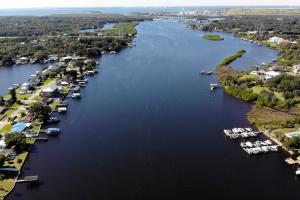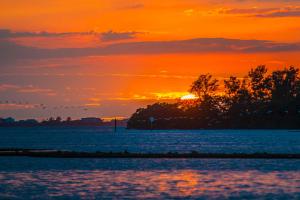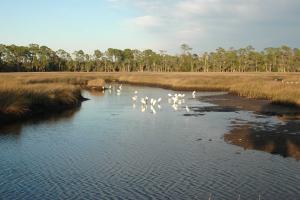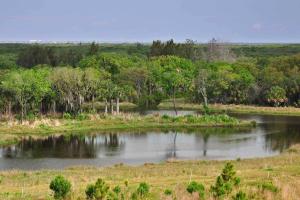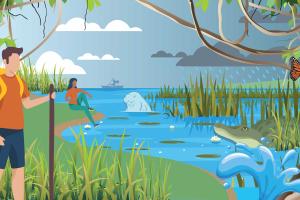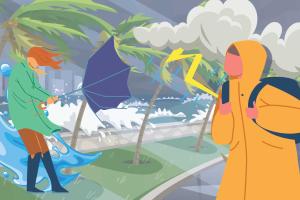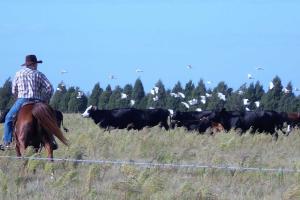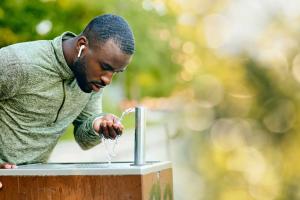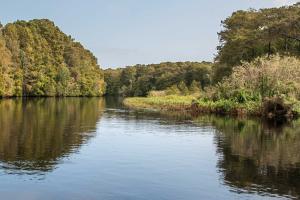Search Content
Displaying results 821 - 840 of 4100
Take a journey down the Alafia River. Spanish explorers called it the Hunting River. Mocoso Indians called it River of Fire. It’s a historic water body with a prehistoric name that spans 25 miles long in west-central Florida.
Let's get started on our excursion
Much progress has been made to restore Sarasota Bay since it was designated an "estuary of national significance" by the U.S. Environmental Protection Agency in 1987.
That same year, the Sarasota Bay Estuary Program was formed and remains very active today. It is one of three cooperative partnerships along Florida’s Gulf Coast that includes local communities, researchers and government agencies all…
The Springs Coast Watershed features one of the largest and most spectacular expanses of salt and brackish marshes found in Florida. Four of the five springs groups in the watershed discharge directly into the Gulf of America in a region that is the second largest seagrass area in the continental United States. With an estimated 700,000 acres — the size of more than 530,000 football fields — the Springs Coast seagrass area is one of the largest seagrass areas in the world.As…
The Southwest Florida Water Management District urges year-round water conservation. Water levels may rise and fall, but our water resources remain limited. The District encourages efficient, non-wasteful uses of water to sustain our high quality of life. For more information about ways to conserve water, contact the District at 1-800-423-1476 or visit the District's website.
Highlights
- The lower half of the river is part of the more than 31,000-acre Chassahowitzka National Wildlife Refuge
- Designated an Outstanding Florida Water
- Located in Citrus County
- 190-square-mile springshed
- Ecological shifts in the river caused by sea level rise, coupled with the decline of spring discharge primarily due to a long-term decrease in…
As Water Resources bureau chief, Jay Hoecker is responsible for management and oversight of regional water supply planning; water supply and resource development projects; economics and demography; water conservation projects; and septic to sewer conversion projects. Hoecker also oversees the FARMS program, which offers cost-share assistance to the agricultural community for conservation, water quality, natural system and alternative water supply best management practices (…
The Water Matters Podcast answers your most popular questions about the work done by the Southwest Florida Water Management District and services offered including new projects, springs protection, water conservation efforts and more. Learn about the many ways we serve the community and protect your resources.
Do you know where your drinking water comes from? You might have poured it from a tap or bought it at the store, but it had to come from somewhere before that. Any guesses?
The ocean? That would be a good guess because the oceans contain most of earth’s water, about 97%! But would you drink a glass of seawater?
No! The salt would make you sick.
We need fresh water. Not just any fresh water though. Did you know most of the world’s fresh water is frozen…
There aren’t many big predators walking around in Florida. Wolves are gone, bears are rare and panthers are nearly extinct. But in the water, it’s different. Florida’s fresh water has alligators and crocodiles — big toothy reptiles. In the ocean there are sharks — big toothy fish. Of course, gator and shark attacks are rare, but it happens enough to make us all a bit nervous.
It’s great to be able to share the state with animals that have been living here for millions of…
The Southwest Florida Water Management District (District) does not have fertilizer restrictions, but many counties and municipalities do. Check with your local government to learn if there are mandatory fertilizer restrictions or few the list below. A fertilizer blackout is a time when using fertilizers containing nitrogen and phosphorus are prohibited, usually during the rainy season. Heavy rain can wash fertilizers, especially granular ones, from lawns to streets,…
The Southwest Florida Water Management District manages lands under its stewardship for the protection of water resources and natural systems through the application of effective, efficient and fiscally responsible land management practices. The purposes and attributes for which the lands were acquired provide the foundation for designating the appropriate land use and management strategies on the lands. As stewards of more than 343,000 acres of land within the its 16-county…
It's easy and costs you nothing.Join your fellow hotels and motels in Water CHAMPSM and conserve Florida's water. What You Get
- Participation in a linen and towel reuse program
- Use of printed materials in all guest rooms
- Use of self-audit checklist
- Training of housekeeping staff
Recycled Water – Safely Supplying Florida’s Future. What is Potable Reuse?Potable reuse refers to highly treated recycled water from various sources people can use for drinking, cooking or bathing.Is Recycled Water Safe for People to Drink?Yes. This type of recycled water uses proven technology to make the water safe. The water meets or is a higher quality than strict state and federal drinking water …
As bureau chief of the Engineering & Project Management (EPM) Bureau at the Southwest Florida Water Management District, Scott Letasi is responsible for the District’s cooperative funding initiative program and District initiatives projects specifically related to the District’s flood protection area of responsibility. The EPM Bureau develops surface water models in the Watershed Management Program and implements the District’s Structures Capital Improvement Program…
As bureau chief of Information Technology, Tom Hughes is responsible for leading and managing the District’s Information Technology Bureau. The bureau works closely with internal and external customers to provide a comprehensive set of information technology services that support the District’s mission to protect water resources, minimize flood risks, and ensure the public’s water needs are met. These activities include the management of the hardware, software and data that…
The District Water Management Plan serves as a comprehensive guide describing our responsibilities for water supply, flood protection, water quality and natural systems.
Section 373.036(2)(e)4 Florida Statutes (F.S.) indicates the water management districts may substitute an annual work plan report included as an addendum to an annual strategic plan for the statutorily required District Water Management Plan. The statute specifies that the strategic plan establish the…
Biking »
From the novice to the expert trails, many different types of biking opportunities can be found on District lands.BikingWilderness Park Off Road Trails System at Lower Hillsborough Wilderness Preserve
The District offers many recreational opportunities for everybody to get outside.The District and its partners provides recreational opportunities for the mobility-impaired. Many of the lands listed in this guide have accessible facilities such as paved trails, boardwalks, fishing piers, picnic areas or restrooms that meet the standards established by the ADA. The District also provides opportunities for mobility-impaired fishing and hunting on some areas…

